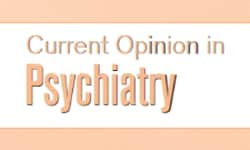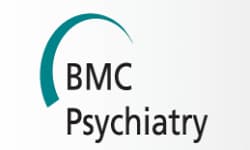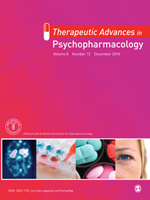 “Cannabis sativa (cannabis) is one of the oldest plants cultivated by men. Cannabidiol (CBD) is the major non-psychomimetic compound derived from cannabis. It has been proposed to have a therapeutic potential over a wide range of neuropsychiatric disorders.
“Cannabis sativa (cannabis) is one of the oldest plants cultivated by men. Cannabidiol (CBD) is the major non-psychomimetic compound derived from cannabis. It has been proposed to have a therapeutic potential over a wide range of neuropsychiatric disorders.
In this narrative review, we have summarized a selected number of pre-clinical and clinical studies, examining the effects of CBD in neuropsychiatric disorders. In some pre-clinical studies, CBD was demonstrated to potentially exhibit anti-epileptic, anti-oxidant, anti-inflammatory anti-psychotic, anxiolytic and anti-depressant properties. Moreover, CBD was shown to reduce addictive effects of some drugs of abuse.
In clinical studies, CBD was shown to be safe, well-tolerated and efficacious in mitigating the symptoms associated with several types of seizure disorders and childhood epilepsies.
Given that treatment with CBD alone was insufficient at managing choreic movements in patients with Huntington’s disease, other cannabis-derived treatments are currently being investigated. Patients with Parkinson’s disease (PD) have reported improvements in sleep and better quality of life with CBD; however, to fully elucidate the therapeutic potential of CBD on the symptoms of PD-associated movement disorders, larger scale, randomized, placebo-controlled studies still need to be conducted in the future.
Currently, there are no human studies that investigated the effects of CBD in either Alzheimer’s disease or unipolar depression, warranting further investigation in this area, considering that CBD was shown to have effects in pre-clinical studies.
Although, anxiolytic properties of CBD were reported in the Social Anxiety Disorder, antipsychotic effects in schizophrenia and anti-addictive qualities in alcohol and drug addictions, here too, larger, randomized, placebo-controlled trials are needed to evaluate the therapeutic potential of CBD.”
https://www.ncbi.nlm.nih.gov/pubmed/31601406
https://www.sciencedirect.com/science/article/pii/S187711731930095X?via%3Dihub
 “Preclinical and clinical data indicate that cannabidiol (CBD), a non-psychotomimetic compound from the Cannabis sativa plant, can induce antipsychotic-like effects.
“Preclinical and clinical data indicate that cannabidiol (CBD), a non-psychotomimetic compound from the Cannabis sativa plant, can induce antipsychotic-like effects.
 “The most recent studies published or initiated in the last 18 months, investigating cannabidiol in the treatment of symptoms of schizophrenia and related conditions are summarized, including observed tolerability and reported side-effects.
“The most recent studies published or initiated in the last 18 months, investigating cannabidiol in the treatment of symptoms of schizophrenia and related conditions are summarized, including observed tolerability and reported side-effects.
 “Recent evidence suggests that
“Recent evidence suggests that  “Medicinal cannabis has received increased research attention over recent years due to loosening global regulatory changes.
“Medicinal cannabis has received increased research attention over recent years due to loosening global regulatory changes. “Stress is a risk factor for psychosis and treatments which mitigate its harmful effects are needed.
“Stress is a risk factor for psychosis and treatments which mitigate its harmful effects are needed.
 “Accumulating evidence implicates the endocannabinoid system in the pathophysiology of psychosis.
“Accumulating evidence implicates the endocannabinoid system in the pathophysiology of psychosis.
 “Cannabis sativa (cannabis) is one of the oldest plants cultivated by men. Cannabidiol (CBD) is the major non-psychomimetic compound derived from cannabis. It has been proposed to have a therapeutic potential over a wide range of neuropsychiatric disorders.
“Cannabis sativa (cannabis) is one of the oldest plants cultivated by men. Cannabidiol (CBD) is the major non-psychomimetic compound derived from cannabis. It has been proposed to have a therapeutic potential over a wide range of neuropsychiatric disorders.